
|

|
|
Home Site Search Contact Us Subscribe
|
|
One-on-One: "I Don't Have Any Competitors Because My Projects Are Unique": Interview with Zhang Hua The Tianjin, China-based architect talks about why architecture needs theory, fractal geometry, teaching, and how seeing a Gaudí for the first time made him cry. By Vladimir Belogolovsky December 8, 2017 It is always a pleasure to be able to talk to a star architect whose daring work attracts a widespread attention. But it is ultimately more rewarding to discover a new talent, not well known internationally. Zhang Hua is leading his Tianjin-based studio, Zhanghua Architects, which is a part of Tianjin Research Institute. Professor Zhang Hua’s work follows his uncompromising form-generating theory, which is based on the desire to capture the progression of transformational processes.
The architect examines and expresses such formal transformations as turning from something basic to complex or from monolith to disperse. The theme is the state of transformation itself, how a form is changing and morphing from one state to another. I had a chance to speak, through an interpreter, with Zhang Hua at his Tianjin studio, with half a dozen young architects seated all around and taking notes.
Vladimir Belogolovsky: We met the other day here at the Tianjin University. I was immediately intrigued by some images of your work, which I find quite powerful. You said your work is different from everyone else’s. You said it is unique. Could you tell me how so?
Zhang Hua: It is not the outcome that’s original, but the process. I concentrate on the process.
VB: How important is it for you to be original?
ZH: I have a theoretical frame, but I am not concerned with achieving any particular look. I am open to many outcomes. I don’t want my style to be fixed. My focus is on transformative processes, on how one thing transforms into another. I am interested in the transition from one state into another – from solid to void, from opaque to transparent, from flat to volumetric, or from static to dynamic. I am interested in the transformation itself to reflect physical changes, geometric changes, conceptual changes, and so on.
VB: You said a powerful statement – architecture needs theory. Tell me more.
ZH: The foundation of my theory is topology. My theory is based on mathematics and fractal geometry. I am interested in natural growth and self-similar, iterated, and detailed mathematical constructs and algorithms. I also find inspiration in Chinese landscapes, mountains, geology, stone formations, tree growth, non-Euclidian geometry, water patterns, and so on.
VB: What do you think about the work of Wang Shu? You told me that he represents the past, while you represent the future.
ZH: My work is based on modern science, quantum physics, chaos theory, complex geometry, and such. Wang Shu’s ideas are based on traditional architecture and geometry.
VB: Could you talk about your studio and how it fits into the larger structure of the Tianjin University? Do you have any competitors here or do you only compete with outside designers?
ZH: Our Institute has about 800 people, of which about 600 are designers – architects and engineers. I work with total freedom here, with a small staff of about a dozen young architects. And, as I already told you, I don’t have any competitors because my projects are unique. [Laughs.]
VB: You teach at the university. How do you teach architecture?
ZH: We work on the same or similar projects that I have in my studio. My students base their theses and research on my theory of architecture. We work in one direction.
VB: You have realized several major cultural centers. Which one are you most proud of?
ZH: That would be the Yu Qingcheng Gallery in Tianjin, a museum of terracotta sculptures by the famous sculptor Yu Qingcheng. It is the most uncompromising of my projects based on fractal geometry. This project illustrates the process of transformation from stationary to super active, as far as a form – from the most basic to very complex. It is like a journey; the destination is open-ended. Typically, I start with a sketch and then my team interprets it with the help of computers. And at some point, the computer takes the lead.
VB: In a way, you are giving up control or your authorship, right?
ZH: It is a collaborative process and I give it a particular direction.
VB: How does the transformation you describe that takes place on your museum’s exterior form affect the function within?
ZH: It does or does not, to some extent. There is a cultural relation between the form and function. It is a sculpture museum; the form is simply an embodiment of the exhibits within. The form is independent of the actual function, but not its cultural function. That’s the whole point. Originally, I envisioned my interiors differently. But they were not realized the way I wanted.
VB: Have you ever realized a project that you were completely satisfied with?
ZH: Never! [Laughs.]
VB: Could you talk more about your inspirations? You mentioned fractal geometry, nature, geology. What else?
ZH: Let me show you one of my sketches from a long time ago [opens one of several large portfolios of sketches]. As you can see, this is just a sketch. I was just drawing.
VB: Unrelated to any particular project.
ZH: Completely unrelated.
VB: And then what happened? Did this lead to a project?
ZH: Nothing happened. [Laughs.] It was just a drawing, an idea. Maybe one day it will be realized&hellip
VB: This drawing was something you did subconsciously.
ZH: Totally.
VB: Earlier we talked about many different influences on your work – mathematics, fractals, Mobius Strip, and so on. What other influences could you mention? Do you get any inspiration from other architects’ work?
ZH: Gaudí.
VB: What was your reaction when you first saw his work?
ZH: I cried. [Laughs.] I have been studying his work for many years, but I only had a chance to see it in person for the first time last year.
VB: What made you cry?
ZH: I have no idea. I had Nirvana-like feelings...
VB: Is it your intention to achieve the same reaction from people when they encounter your work?
ZH: Maybe. [Laughs.] Another example of inspiration for me is the Aqua Tower by Jeanne Gang in Chicago.
VB: Would you say that her tower explores similar ideas to your work?
ZH: Not exactly, but there are some similarities in the result.
VB: Her design primarily addresses specificity of the site and context, and how the building’s form, its surfaces, and various layouts of the balconies can affect the views, wind loads, and even provoke social interaction among the residents.
ZH: I am not sure this is accurate. I think the reality is a little different from how the project is explained.
VB: Do you mean her choices are more intuitive and artistic than strictly based on performance?
ZH: Sure.
VB: As we have been discussing your work a number of words keep repeating: naturalism, abstraction, Mobius Strip, original design&hellip What other words or phrases would you use to describe your architecture?
ZH: I love the work of M.C. Escher, the graphic artist, because it is impossible. Paradox is something that I like to bring into my work as well. His paradox was on paper, but I try to bring paradox into the real world. You have to look at my work as a whole. Then you see its logic and how it flows from one end to the other. But if you only analyze different parts, they have nothing to do with each other; they are paradoxical. I like to say that architecture is a reflection of how we see our world. I see the world in a certain way and this is how I express it in my architecture.
VB: Let’s talk about another one of your projects, Geological Museum near Tianjin. It appears to be merging with the surrounding mountains. Could you talk about its main concept?
ZH: The building is built out of stone, in layers like geological stratum. The stones were reclaimed from the abandoned houses in nearby villages in the mountains. So it is a very sustainable project. I have a particular interest in stone and minerals, and I have an extensive collection, which is one of the references and inspirations for my work. Merging architecture with its surrounding is one of my primary themes.
VB: Over the last couple of decades, China has become every architect’s dream and testing ground. What do you think about recent guidelines initiated by the Communist Party of China Central Committee to end “odd-shaped” and “weird” buildings? This directive called for buildings that are "economic, green and beautiful." Municipal governments want to take over control of regulating buildings' size, style, and even materials and colors.
ZH: This is all true, but it is hard for me to criticize this new reality.
VB: Would you say that you have to be more restrictive now?
ZH: I can’t say if it is bad, but it is true that we need to be more conscious about the economy and buildability of our projects. Maybe it is a good thing.
VB: Are you concerned with what Chinese architecture is, and do you try to express it in any way in your work?
ZH: Not at all. I have my own ways of expressing my ideas. I don’t feel restrained in any way. I would even say that I feel lonely in my thinking&hellip
VB: This is a very interesting thought because I talk to leading international architects all the time, and what I am hearing is that you architects are, in fact, very lonely because you try so hard to find your own way, and when you succeed, you become isolated. Too many choices lead to isolation. That’s why the theme Common Ground became so central in the profession a few years ago, and now younger architects are giving up their claims to authorship, preferring to focus on teamwork and problem-solving.
ZH: Not me. [Laughs.]
VB: Do you have a dream project?
ZH: Just a dream. I wish I would get the Pritzker Prize! [Laughs.]
VB: Well, I think you would have to wait some years because if I could make my prediction, the next Pritzker will not be given for originality. And I would say the next recipient will be someone who we never heard about before. It is very intriguing.
Vladimir Belogolovsky, founder of the New York City-based non-profit Intercontinental Curatorial Project, curates architectural exhibitions worldwide, and writes for Arquitectura Viva (Madrid) and SPEECH (Berlin) magazines. Trained as an architect at Cooper Union, he is the author of Conversations with Peter Eisenman: The Evolution of Architectural Style (DOM, 2016), Conversations with Architects in the Age of Celebrity (DOM, 2015), Harry Seidler: LifeWork (Rizzoli, 2014), Felix Novikov (DOM, 2013; Tatlin, 2009), Soviet Modernism: 1955-1985 (Tatlin, 2010), and Green House (Tatlin, 2009). His conceptual installation “City of Ideas: Architects’ Voices & Visions” premiered at the University of Sydney in July 2016, then traveled to the Chicago Design Museum. Additional shows are planned in Mexico City and Buenos Aires later this year..
More by Belogolovsky:
One-on-One: "I
wanted to be in the middle of things": Interview with Vito Acconci
One-on-One: A Cult of Objectivity: Interview with Massimo
Vignelli
One-on-One: Architecture is not exactly global: Interview
with Orlando Garcia
One-on-One: Revolution in Architecture: Interview with Gregg
Pasquarelli, SHoP Architects
"Harry Seidler: Architecture, Art and Collaborative Design" A new traveling exhibition celebrates the 90th anniversary of the birth of Harry Seidler, the leading Australian architect of the 20th century who followed his convictions and vision.
Colombia: Transformed / Architecture = Politics The curators of the exhibition making its world debut in Chicago this week throw the spotlight on five Colombian architects who leverage brick, concrete, and glass forms to improve the lives of ordinary people.
One-on-One: We architects are politicians: Interview with Giancarlo Mazzanti "Now is the time to think of how architecture can change the world. We architects can assume that role and make a real difference in how people live and behave."
One-on-One: Architecture that leads to a point: Interview with Daniel Libeskind "Every building, every city should have a story."
One-on-One: Architecture of Emotion and Place: Interview with Bartholomew Voorsanger, FAIA, MAIBC The architect's aspiration to create expressive, dynamic spaces is absolutely the key to his work.
One-on-One: Architecture as a Social Instrument: Interview with Bjarke Ingels of BIG It is not for nothing that this young architect is referred to as the "Yes Man" with a willingness - and ability - to please just about everyone.
One-on-One: Putting Colors Together: An Interview with Will Alsop For Alsop, it is the act of painting, the state of losing control - its imprecision and intuitiveness - that best define his initial vague intentions - and what ultimately brings him close to the mystery of inventing new architecture.
One-on-One: The Art of Ennobling Communities: Interview with Sara Caples and Everardo Jefferson These architects have proven time and time again that architecture can transform reality and change attitudes.
One on One: Elusive Architecture: Interview with Kengo Kuma "I want to create a condition that is as vague and ambiguous as drifting particles. The closest thing to such a condition is a rainbow." |
(click on pictures to enlarge)  Zhang Hua Yu Qingcheng Gallery, Tianjin 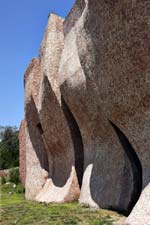 Zhang Hua Yu Qingcheng Gallery, Tianjin 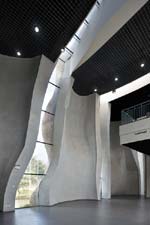 Zhang Hua Yu Qingcheng Gallery, Tianjin  Zhang Hua Yu Qingcheng Gallery, Tianjin  Zhang Hua Yu Qingcheng Gallery, Tianjin 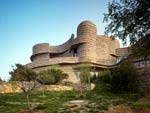 Zhang Hua Geological Museum, Tianjin 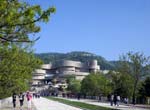 Zhang Hua Geological Museum, Tianjin 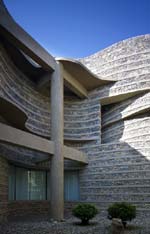 Zhang Hua China Stone Museum, Liuzhou 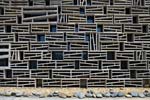 Zhang Hua China Stone Museum, Liuzhou 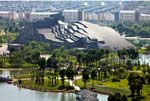 Zhang Hua China Stone Museum, Liuzhou  Zhang Hua China Stone Museum, Liuzhou  Zhang Hua Seepage Church 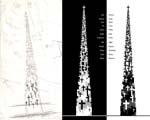 Zhang Hua Seepage Church 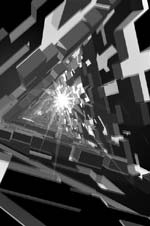 Zhang Hua Seepage Church 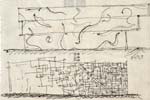 Zhang Hua Façade study for a potential project |
© 2017 ArchNewsNow.com